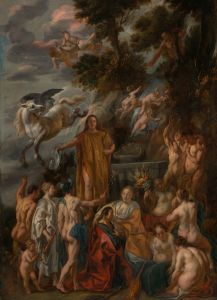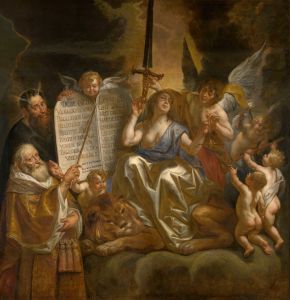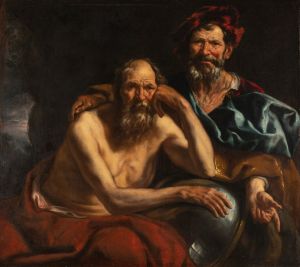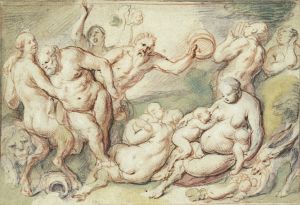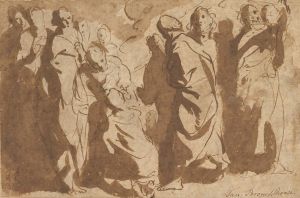
The Good Samaritan
A hand-painted replica of Jacob Jordaens’s masterpiece The Good Samaritan, meticulously crafted by professional artists to capture the true essence of the original. Each piece is created with museum-quality canvas and rare mineral pigments, carefully painted by experienced artists with delicate brushstrokes and rich, layered colors to perfectly recreate the texture of the original artwork. Unlike machine-printed reproductions, this hand-painted version brings the painting to life, infused with the artist’s emotions and skill in every stroke. Whether for personal collection or home decoration, it instantly elevates the artistic atmosphere of any space.
Jacob Jordaens, a prominent Flemish Baroque painter, is known for his dynamic compositions and vibrant use of color. Among his numerous works, "The Good Samaritan" stands out as a significant piece that reflects his mastery in depicting biblical themes with emotional intensity and realism.
"The Good Samaritan" by Jacob Jordaens is an oil painting that illustrates the parable of the Good Samaritan, a story from the New Testament of the Christian Bible, specifically found in the Gospel of Luke 10:25-37. This parable tells the story of a Samaritan who helps a traveler who has been beaten and left for dead by the roadside, while others, including a priest and a Levite, pass by without offering assistance. The story is often interpreted as a lesson in compassion and love for one's neighbor, transcending social and ethnic boundaries.
Jordaens' interpretation of this parable captures the moment of the Samaritan's compassionate act. The painting is characterized by its dramatic use of light and shadow, a technique known as chiaroscuro, which Jordaens employed to highlight the emotional gravity of the scene. The figures are rendered with a robust physicality, a hallmark of Jordaens' style, which brings a sense of immediacy and realism to the narrative.
In the composition, Jordaens places the Samaritan at the center, emphasizing his role as the protagonist of the story. The Samaritan is depicted in the act of tending to the wounded traveler, his expression one of concern and determination. The use of rich, warm colors adds to the emotional depth of the scene, drawing the viewer into the narrative. The background is typically Baroque, with a dynamic interplay of light and dark that enhances the drama of the moment.
Jordaens was part of the Flemish Baroque tradition, which was heavily influenced by the works of Peter Paul Rubens, under whom Jordaens studied. Like Rubens, Jordaens was adept at conveying movement and emotion, and his works often feature robust figures and a lively sense of action. "The Good Samaritan" exemplifies these qualities, showcasing Jordaens' ability to convey a powerful moral message through his art.
The painting also reflects Jordaens' interest in human expression and interaction, a theme that recurs throughout his body of work. His attention to detail in the depiction of the figures' faces and gestures adds a layer of psychological depth to the painting, inviting viewers to engage with the narrative on a personal level.
While Jordaens is often overshadowed by his contemporaries, such as Rubens and Anthony van Dyck, his contributions to the Baroque movement are significant. His works, including "The Good Samaritan," demonstrate his skill in blending religious themes with a vivid, naturalistic style that appeals to both the emotions and the intellect.
"The Good Samaritan" remains an important work in Jordaens' oeuvre, illustrating his ability to interpret biblical stories with a unique blend of drama, realism, and compassion. The painting continues to be appreciated for its artistic merit and its enduring message of empathy and kindness.






